Sick of zombies yet? It wasn't that long ago that genre fans were clamoring for films featuring the walking dead; when the idea of another George Romero zombie film seemed like some sort of beautiful dream. Flash ahead a decade and - after 28 Days Later, the Dawn of the Dead remake, Shaun of the Dead, Land of the Dead, Zombieland and the literally hundreds of tributes, sequels, remakes, and reimaginings - you would be excused for perhaps being a little burnt (ha!) out on the genre.Well, thankfully while Burning Dead certainly features zombies - and plenty of them - the film stays far enough away from traditional z-word material that it's able to tell a story that is (wait for it) fairly original. Combine this with some committed performances and an ability to work inside its limitations, and you have an effort that manages to rise above other no-budget living dead efforts.
Returning to his home town after a decade away, a guilt-ridden Jim Reed (D. Vincent Ashby) finds himself suffering from nightmares prominently featuring zombies blaming him for starting the fire that devastated the town (and killed his parents) when he was a teenager. Even worse, Jim has started to see these visions while awake and worries that he's starting to lose control - a theory supported by him wandering into his nephew's bedroom and trying to kill the kid with a hammer. When Shelly, an old flame (ha!), shows up Jim begins to wonder if his dreams might really represent some deeply hidden memories of the fire. His search for the truth leads to some uncomfortable, and supernatural, secrets being revealed.
Much credit for the minor success of Burning Dead must be given to D. Vincent Ashby who, despite some shaky moments, is obviously giving everything he has to make this role work. His Jim is a tormented soul, who has a habit of losing himself in flashbacks and is almost comically solemn when speaking about nightmares or his own disturbed memories. Ashby is asked to perform a lot of dialog - and even occasionally emote - and does so surprisingly professionally with the proper amount of brooding to give the often silly material the proper weight. The supporting cast are also a step above most other shot-on-video efforts, with Jon Russell as Jim's childhood friend Bill Nash doing a fine job on comic relief.
Unfortunately director George Demick doesn't give Ashby or the rest of the cast as much support as they deserve. While Demick wisely stays away from many visual tricks, his camera work tends to be rather stationary which makes some of the longer dialog scenes interminable. Image quality varies significantly, with daytime shots looking clear and underlit night shots forcing me to squint to make out any details. There's plenty of digital artifacting as well, but that could be the result of the mastering of the disc, so I won't blame Demick (or Director of Photography Tracy C). I will blame him for some bizarre sound issues that pop up throughout where all dialog comes from one audio channel, with background music coming from the other. It's needlessly distracting, and draws a lot of attention to edits - which are sometimes accompanied with a sudden switch to the sound coming out of both channels. Pretty inexcusable.
Still, Demick deserves credit for an often intriguing script which takes a few surprising twists near the end. Much of the first twenty minutes deals with whether Jim's hallucinations are actually occurring, but the film doesn't dwell on the suspicions of the people around him, instead focusing on the mystery of how the fire occurred and why Jim is being held responsible. While the actual content isn't always perfect - Bill's explanation of his wife's death is certainly rather odd - it all does add up to a rather neat climax and the film doesn't waste time getting to the end once things start to speed up.
Much credit for the minor success of Burning Dead must be given to D. Vincent Ashby who, despite some shaky moments, is obviously giving everything he has to make this role work. His Jim is a tormented soul, who has a habit of losing himself in flashbacks and is almost comically solemn when speaking about nightmares or his own disturbed memories. Ashby is asked to perform a lot of dialog - and even occasionally emote - and does so surprisingly professionally with the proper amount of brooding to give the often silly material the proper weight. The supporting cast are also a step above most other shot-on-video efforts, with Jon Russell as Jim's childhood friend Bill Nash doing a fine job on comic relief.
Unfortunately director George Demick doesn't give Ashby or the rest of the cast as much support as they deserve. While Demick wisely stays away from many visual tricks, his camera work tends to be rather stationary which makes some of the longer dialog scenes interminable. Image quality varies significantly, with daytime shots looking clear and underlit night shots forcing me to squint to make out any details. There's plenty of digital artifacting as well, but that could be the result of the mastering of the disc, so I won't blame Demick (or Director of Photography Tracy C). I will blame him for some bizarre sound issues that pop up throughout where all dialog comes from one audio channel, with background music coming from the other. It's needlessly distracting, and draws a lot of attention to edits - which are sometimes accompanied with a sudden switch to the sound coming out of both channels. Pretty inexcusable.
Still, Demick deserves credit for an often intriguing script which takes a few surprising twists near the end. Much of the first twenty minutes deals with whether Jim's hallucinations are actually occurring, but the film doesn't dwell on the suspicions of the people around him, instead focusing on the mystery of how the fire occurred and why Jim is being held responsible. While the actual content isn't always perfect - Bill's explanation of his wife's death is certainly rather odd - it all does add up to a rather neat climax and the film doesn't waste time getting to the end once things start to speed up.
Remember what I said about working within its limitations? Well, that goes for make-up and special effects as well as Demick trades in gore for some decent (and plentiful) zombie make-up and LOTS of fog. The burnt flesh on the zombies actually looks quite good, and while there isn't much blood to be found, these really are not the gut-munching sort of zombie. There's only one scene featuring nudity, but it's actually rather effective - intentionally bringing to mind a rather famous scene from The Shining - and it's a slightly more mature woman as well which is definitely a rarity in this collection.
Burning Dead is presented in a full-frame presentation, and is obviously shot on digital video. As mentioned, the digital artifacting is atrocious during the night scenes, but it's generally very watchable. There are a few random digital glitches, but those are par for the course at this point.
This is part of the Bloody Nightmares collection, and therefore has absolutely no extras. Not even chapter stops. I can't imagine why that is.
An enjoyable no-budget sorta-zombie film that manages no to tread the same old ground, Burning Dead takes an original concept and some willing participants and manages to create a perfectly decent 90 minute horror film. It's not very scary, and the technical problems would likely scare away those used to bigger budgets, but there's plenty to appreciate here and it's a shame that it seems to be nearly completely unknown - it doesn't even have an IMDB page! You could definitely do a lot worse.

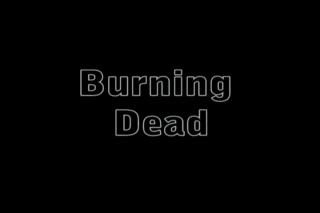
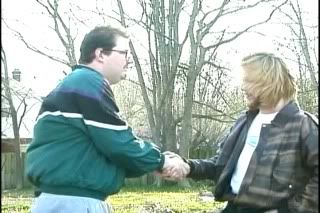
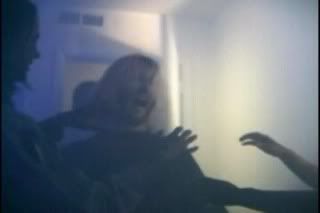
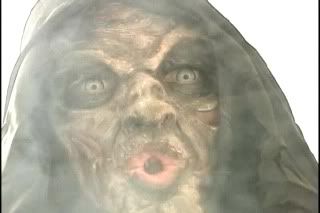
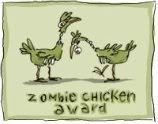








No comments:
Post a Comment